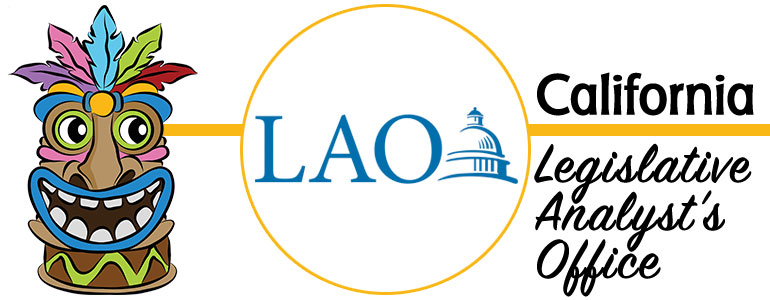
Our office will publish shorter, more focused budget analyses over the next few months. In most cases, rather than sending out an announcement for each publication, we will provide periodic updates with the key takeaways from recent pieces. All of our 2023-24 budget analyses to date can be found here.
The 2023-24 Budget: Department of Community Services and Development
- Governor’s Budget Proposes to Revert Unspent Energy Assistance Funds. As a budget solution, the administration proposes to revert $400 million of unspent California Arrearage Payment Program (CAPP) funding to the General Fund. The program was allocated $1.2 billion in 2022-23 based on estimated need to pay down remaining eligible energy utility arrearages accrued during the pandemic period of March 2020 through December 2021. However, participating utility companies ultimately applied for only $647 million to pay down their eligible customers’ arrears, leaving around $550 million in unspent CAPP funds.
- Proposal Seems Reasonable; Updated Amount Anticipated for May Revision. Because CAPP assistance has been used to pay down all customer debt that participating utility companies applied for, we find the administration’s proposal to a be a reasonable budget solution. The proposed $400 million reversion was estimated prior to the close of the 2022-23 CAPP application and disbursement period. We anticipate the administration will update the proposed reversion amount as part of its May Revision proposal.
- Energy Utility Debt Remains, but Currently Is Not Quantified. Although CAPP effectively paid down a significant amount of energy customer debt accrued during the specified pandemic period, a currently unquantifiable level of debt remains for a variety of reasons. Setting aside the extraordinary economic impacts of the pandemic, some level of statewide energy utility debt is to be expected at any time, due in part to the circumstances of individual customers. To the extent the Legislature is interested in understanding more about how current levels of energy utility debt and affordability challenges compare to the extraordinary arrearages of the pandemic period, the Legislature could request that the Department of Community Services and Development examine this issue.
The 2023-24 Budget: Child Care Proposals
- Governor’s Budget Proposal to Delay Child Care Slot Increase Seems Reasonable. The 2021-22 budget agreement included a plan to add 200,000 child care slots by 2025-26. Since 2021-22, the state has added about 146,000 new slots. The Governor proposes to delay the remaining child care slot increases by one year. We find that the Governor’s budget proposal is reasonable because (1) the state is facing a projected budget problem, and (2) the majority of funding for new slots has not yet been allocated to child care providers. Overall, we do not expect access to child care to be significantly impacted given the amount of currently unfilled slots.
- Potential Savings the Legislature Could Immediately Capture in Budget for Other Legislative Priorities. These potential savings include: (1) as much as roughly $800 million in savings in 2022-23 resulting from delays in allocating 2021-22 slot increases, (2) $80 million to $100 million in excess funding related to allocating a cost-of-living adjustment to certain child care providers, and (3) several hundreds of millions of dollars in one-time federal relief fund savings across 2022-23 and 2023-24. We are verifying these potential savings with the Department of Social Services and will update the Legislature as more information becomes available.
- Consider Merits of Maintaining Temporary Changes to Family Fees and Reimbursement Flexibilities. During COVID-19, the state waived family fees and modified reimbursement rules to maintain provider payment levels due to attendance declines during the pandemic. These flexibilities are set to expire June 30, 2023. The Legislature could consider ways to mitigate access barriers created by family fees. Additionally, we find that maintaining some form of reimbursement flexibility has merit for some providers, but for other providers it is not aligned with the goal to maximize children served.
